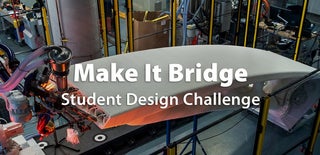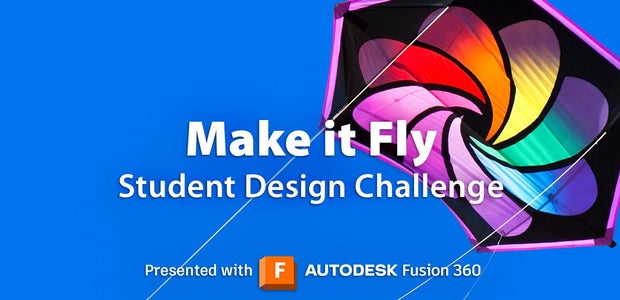Introduction: Pedestrian Swing Bridge
Hello, I am Andrew Chen from Staten Island Technical High School and I am currently a rising junior. For this contest, I decided to design a bridge to connect the northern part of Staten Island and New Jersey since I learned there was not a way to walk across the river in between.
Supplies
Programs used:
Autodesk Inventor
Autodesk 3ds Max
Autodesk Infraworks
Step 1: Finding a Location
The first step of this contest was to find a place to create a bridge that would be relevant to one or more of the following:
- Strengthening civic life or social infrastructure
- Bringing people together across lines of difference
- Promoting a deeper relationship between humans and nature
- Increasing accessibility and/or a sense of belonging for a user group
I looked around my community which was Staten Island and noticed that the Northern part of the Island had no easy way to get to New Jersey despite being only 500m away. There was already a bridge for vehicles that was built to allow vehicles to cross but not pedestrians.
Creating a bridge to connect these 2 locations be relevant to one or more of the uses that my bridge should have.
Step 2: Design Problems
The second step of building a bridge was to think of what design problems or obstacles I would have to face when building my bridge. After beginning to construct my bridge, I realized that many ships passed through the river where I was building my bridge.
The reason why the nearby vehicle bridge was built with a high clearance was to allow tall cargo ships to pass through. This forced me to rethink a design for my bridge.
Step 3: Brain Storming Ideas and Inspiration
One solution to the problem of having to allow ships to pass through my bridge led me to research. After looking at other bridges on Staten Island I realized that building a swing bridge would be a good solution. I decided to go with a turning style swing bridge rather than one that lifted 2 wing to allow for ships to pass.
Step 4: Researching
After doing research on how the swing bridge works, I determined that my bridge would have to be equipped with gears and wheels to allow for a massive bridge to be able to turn due to its high moment of inertia. I decided to build a simplified version of a swing bridge as for demonstration purposes since a real and functional swing bridge is too complicated to design.
Step 5: Researching Part 2
Since I was building a swing bridge that turned, I had to design a type of bridge that would hold up being held from its center. If I just build a long road over the main turning mechanism, it would just fall apart. I looked at swing bridges around the world and determined that a truss bridge that was taller in the middle would hold up better than other types of trusses. A bridge type like the camelback would be well suited for a swing bridge. The reason why I had to create the bridge so long was to enable the wide cargo ships to pass through which sometimes were well over 30 meters long.
Step 6: Designing the Swing Bridge
For the first step of my swing bridge, I designed the actual bridge that would go on top of the turning mechanism of my bridge. For this, I used Autodesk inventor, since I already had some prior experience using the program.
I then used a stress analysis to determine the integrity of my bridge. I created fixed points at the center of my bridge where it would be held and tested it using the force of gravity.
Step 7: Designing Part 2 and Animating
For the second part of the swing bridge, I created a simplified version of how a real swing bridge worked for conceptual purposes. I created gears and wheels that were attached to the bridge part of my swing bridge to enable the bridge to rotate.
I then created some animations detailing how the gears rotated in relation to each other.
Step 8: Creating Connecting Piers
Since the river that I was building my bridge over was over 400 meters long, I could not just build a swing bridge that was 400 meters long which would not make as a good pedestrian bridge. Instead I would create 2 piers on both sides of Staten Island and New Jersey which people could hang out on. I used Autodesk Infraworks to create the 2 piers and edited and modified them to fit a more pedestrian style pier. I added benches, hotdog stands and lamp posts as decoration.
I also created designated stairs for the bridge on both sides. I also created ramps for people in wheel chairs so that they could also get on the bridge. I created these stairs and ramps in Autodesk Inventor and imported them into Infraworks.
Step 9: Creating More Animations
I then used 3ds Max to create a simple animation that showcased how an interaction between a ship and the swing bridge would occur. When there is an incoming ship, an operator from the operator's house would turn the bridge to allow the ship to pass through and then close it when the ship has passed to allow people to cross.
Step 10: Final Model and Video
After I exported the animated model from 3ds Max, I placed it in my Infraworks model for showcasing. After I placed some more decorations which included foliage and some cars, I used the Infraworks storyboard feature to generate a cinematic-like video to showcase the bridge and its features.
Step 11: Conclusion
This bridge uses innovative bridge designs such as swing bridges to face problems such as incoming ships while enabling pedestrians. The addition 2 piers on both sides allows people from both sides of Staten Island and New Jersey to hang out and connect with each other, when they could not have before.
Overall, this was a fun and worthwhile project, as it furthered sharpened my ability to uses Autodesk programs and helped me to discover new ones.
Step 12: Credit
The bench models used in the model can be found here:
https://sketchfab.com/3d-models/modern-bench-1-caa4515e36444e4c8c100296463e83c1
https://sketchfab.com/3d-models/modern-bench-2-118e358d76a642329b51c5cdd2ffc1c6

Second Prize in the
Make It Bridge










2 Comments
11 days ago
That would have been a great idea!
11 days ago
It would be great if there was a walking path between the two states. Needs a bike lane too! 😀